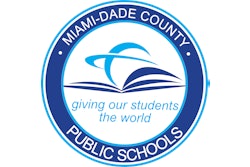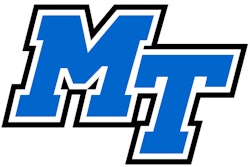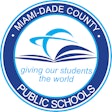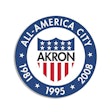Copyright 2017 Star Tribune
All Rights Reserved
Star Tribune (Minneapolis, MN)
The editorial "Rebuild Public Trust in Stadium Leadership" (Feb. 12) missed the mark. There has never been any public trust in stadium leadership.
Gaining the public trust in the stewardship of some $1 billion over 30 years in total public contributions and subsidies will require far more than the cosmetic changes currently under review. These proposals will only move a few chairs around on the U.S. Bank Titanic - to build on a metaphor used by Rep. Sarah Anderson, R-Plymouth, when she called the misused suite fiasco "only the tip of the iceberg."
In the aftermath of the 2013 municipal elections, the Star Tribune's Jon Tevlin wrote a column titled: "Stadium deal was as transparent as the Berlin Wall." Three years later, as we prepare for our next municipal election, the Vikings are proposing that a literal permanent wall be built around the "People's Stadium." Pay no heed to yet another story in the saga of dysfunction that only serves to make discovering the real issues more difficult.
In the spirit of resisting walls of all kinds, and instead of getting bogged down in distractions, let's clearly lay out what legislation obligates the city of Minneapolis to cover regarding both construction capital and ongoing operation and maintenance costs for the stadium and surrounding infrastructure. Then we will begin to see the real scandal: how far beyond its legal obligation and into the realm of charitable contributions to Zygi Wilf our city has gone.
First let's talk about construction costs.
The stadium legislation set the city's contribution to the construction of the stadium and any surrounding infrastructure, including open space and parking facilities, at $150 million. The city will use sales tax to pay its $150 million, which has gone exclusively towards stadium construction.
That's transparent enough, right?
Wrong! Remember that the $150 million limit included construction costs of surrounding infrastructure as well (open space and parking facilities). As pointed out in former Gov. Arne Carlson's recent letter to the editor, the city is in clear violation of the construction spending limit, because of construction costs for surrounding infrastructure.
City taxpayers may be unaware that they are on the hook for expected revenue shortfalls on $62 million in general-obligation bonds issued to finance the construction of a parking ramp and acquire the land for a park. The actual construction of the park is still in limbo as fundraising is stagnant, despite the city contributing an addition $2 million toward that effort.
The bonds are to be covered by revenue generated by the parking ramp. However, premium ticket holders receive free parking.
And if all this is not enough to make your head spin, consider that revenue from naming rights generated by this publicly funded "Mills Fleet Farm Ramp" will go directly to the Wilfs rather than to reimburse the taxpayers.
Next, let's address operating costs.
In her Feb. 3 letter to the legislative auditor, outgoing stadium authority chair Michelle Kelm-Helgen made this remarkable statement: "Unlike other public facilities in the region, the authority does not seek public funding to cover the ongoing cost of operations and management."
If only it were so.
Almost no one realizes that the stadium legislation stipulates that the city of Minneapolis will fund through its sales taxes an annual operating and capital maintenance subsidy of $7.5 million per year. This amounts to $225 million during the next 30 years.
And once again, city leaders are willing to go above and beyond.
The City Council committed an additional $500,000 to operate the park in 2017 (a number that is expected to grow). The Minneapolis Parks and Recreation Board refused to take responsibility for operating the park because it is financially unsustainable and is an unjustifiable expenditure of resources given the city's park priorities.
The $150 million number for the city's contribution to the stadium cited in nearly every U.S. Bank Stadium article? Not even close. The true cost to the a city is more than $400 million, exclusive of bond costs and interest.
OK, so this deal was awful, harmed the city's financial future; we all got hosed. Get over it, right? Nothing we can do about it. This is the most dangerous myth of all.
These troubling issues have been raised with the mayor and City Council for three years. Letters and comments have been ignored. Former Gov. Carlson and one of today's authors practically begged for reforming the stadium authority and for city leadership on these issues in a bipartisan Star Tribune commentary in 2014 ("Stadium funding in need of review," Sept. 7, 2014). Deafening silence from City Hall.
Remarkably it is still not too late to stop the bleeding. As mayoral and City Council candidates ask for your vote, you should ask for their public support of the following measures:
1) An annual audit of all city expenditures for stadium-related infrastructure and city services;
2) Strict adherence to the statutory caps on stadium-related city spending;
3) A commitment to use only the city's current $6 million operating subsidy for the operation and maintenance of the Commons, shortfalls on the parking revenue bonds, and Super Bowl costs;
4) An independent legal review of the validity of contracts entered into by the stadium authority that compromised the city's financial interests; and
5) A public hearing on all issues related to ongoing city stadium subsidies
Our City Council and mayor have been fond of trumpeting their progressive bona fides as they wage their resistance against our new federal administration. Mayor Hodges recently declared that Minneapolis must be a "shining beacon of progressive light and accomplishment." Meanwhile, as it relates to the stadium debacle, the mayor and council are hiding behind their own version of the Berlin Wall.
Their platitudes surrounding equity will continue to ring hollow unless their financial priorities match their progressive rhetoric.
We must get our priorities straight. If we get serious about sober fiscal diligence, we can make a stadium-sized investment towards addressing our real issues. We have the resources. Do we have the resolve?
Paul Ostrow and John Hayden are residents of northeast Minneapolis. Ostrow was a member of the City Council from 1998 to 2009.
Read More of Today's AB Headlines
Subscribe to Our Daily E-Newsletter
Terms and Conditions Privacy Policy



































